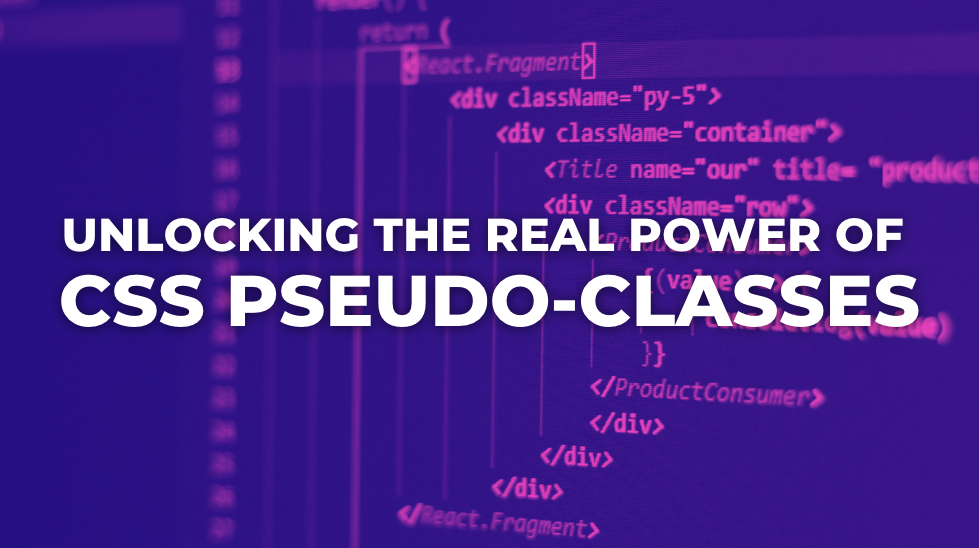Most CSS tutorials treat pseudo-classes like a set of training wheels, enough to style a link hover or highlight a focused input. But in real-world design systems, pseudo-classes are far more than that. Used intentionally, they become powerful tools for writing cleaner, smarter, and more responsive CSS.
Let’s break down how pseudo-classes are evolving, and how you can weaponize them in production environments.
Structural Pseudo-Classes: The Forgotten Workhorses
Sure, :first-child and :nth-child() aren’t new. But if you’re still using utility classes to alternate row styles or slap borders on the first card in a grid, you’re doing more work than you need.
.card-list > .card:nth-child(odd) {
background-color: #f7f7f7;
}Even better, pair them with grid layouts and container queries for layout-aware styling without class bloat.
Bonus: :only-child is criminally underused. It’s perfect for adjusting spacing logic when the DOM doesn’t fill out the way you expect.
Interaction Pseudo-Classes: Accessibility Goldmines
Modern UI isn’t just about what looks good, it’s about what feels right. Enter :focus-visible and :focus-within.
input:focus-visible {
outline: 2px solid var(--highlight);
}These classes allow you to design with keyboard users in mind, avoiding the typical “remove all outlines” accessibility disaster.
Form States: Smarter Validation without JS
input:invalid {
border-color: red;
}
input:valid:focus {
border-color: green;
}Add :required, :disabled, :checked, and you can build a shockingly full-featured form UI without writing a single line of JavaScript.
Modern Logic with :not() and :is()
:not()
button:not(.primary) {
opacity: 0.7;
}Exclude elements without adding cluttered override classes. Be cautious: large selectors inside :not() can nuke performance in complex DOMs.
:is()
:is(h1, h2, h3).highlighted {
color: var(--accent);
}The DRY selector’s best friend. Group variants and reduce repetition. Caveat: specificity gets collapsed inside :is(). That’s a feature, not a bug, if you know how to use it right.
:has() Real Parent Awareness (Finally)
.card:has(img) {
padding-top: 0;
}
.form-group:has(input:invalid) {
background-color: #ffeaea;
}This opens up layout responsiveness, form validation, and even conditional components, all inside CSS. It’s still unsupported in Firefox without a flag, but worth watching.
TL;DR: Treat Pseudo-Classes Like a Power Tool
- Write leaner CSS
- Reduce DOM complexity
- Improve accessibility
- Replace small JS scripts
- Modernize your design system logic
If you’re building design systems or client sites that scale, start thinking about pseudo-classes as logic gates not just style sugar.
Want examples of these patterns in the wild? Hit us up. We’re always down to talk code.






0 Comments